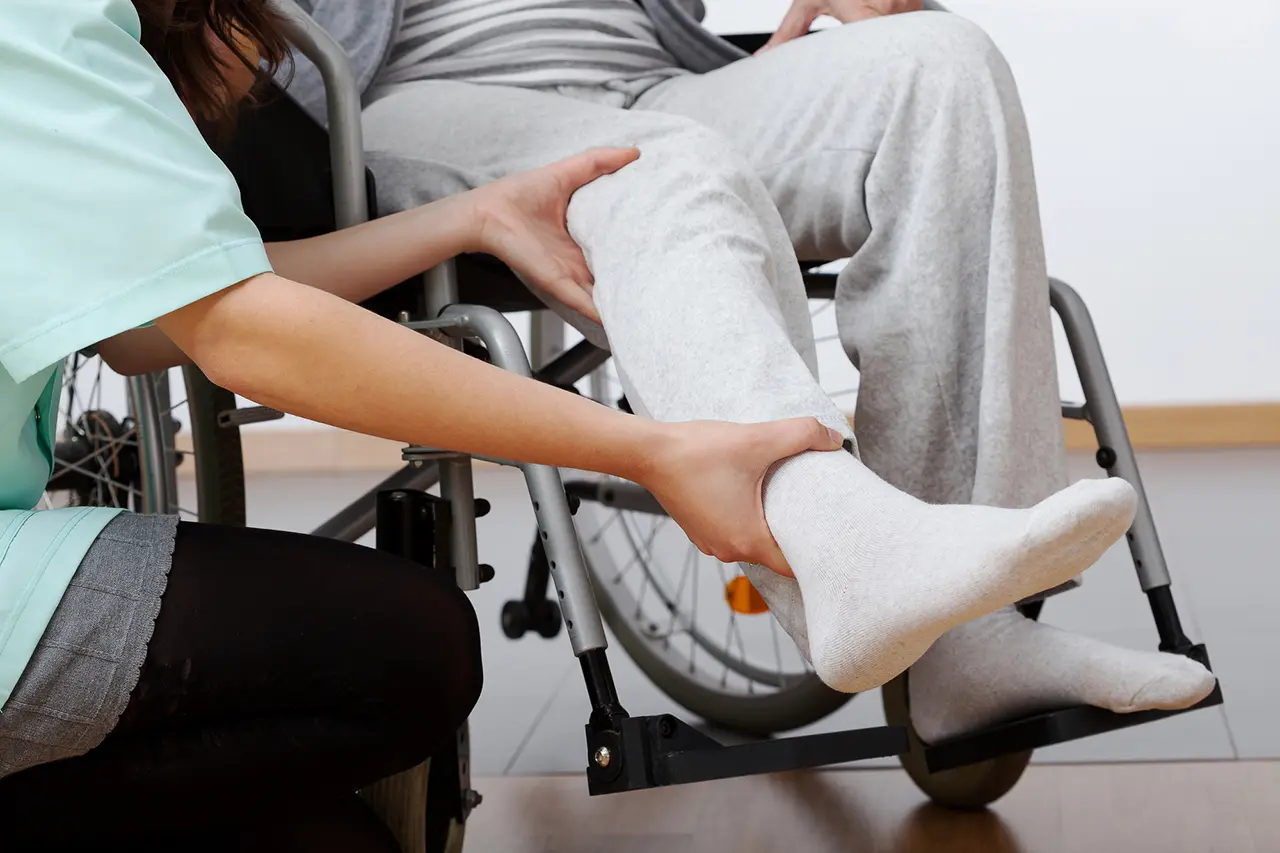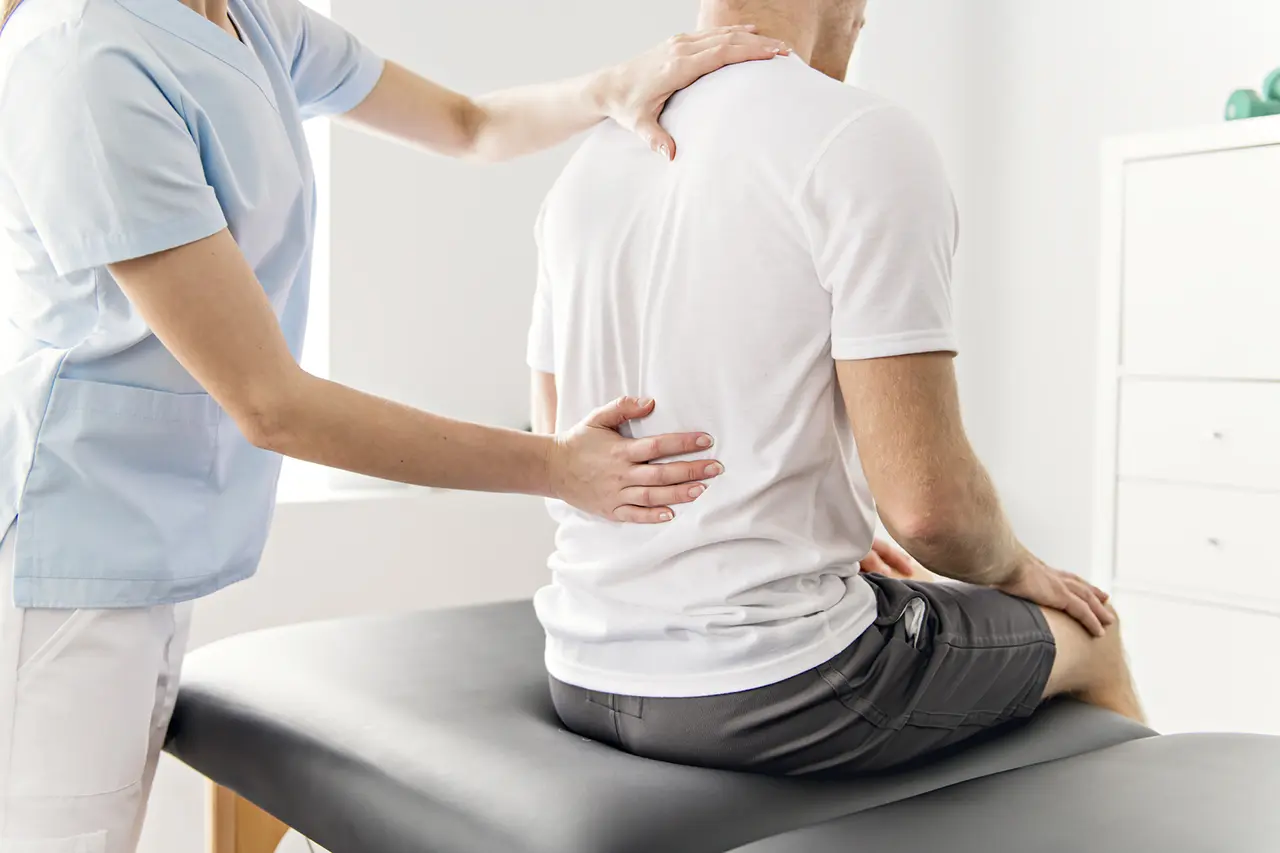
Stroke can have a severe impact on a person’s mobility, leaving survivors with limited movement and independence. However, there is hope for recovery through the power of physiotherapy. In this article, we will explore how physiotherapy plays a crucial role in helping stroke rehabilitation and how people can regain their mobility and improve their quality of life.
Physiotherapy techniques such as exercise programs, balance training, and functional electrical stimulation can help stroke survivors relearn movement, strengthen muscles, and improve coordination. These therapies are tailored to each individual’s specific needs and goals. By working closely with a physiotherapist, stroke survivors can overcome physical limitations, increase their range of motion, and regain the ability to perform daily activities.
Moreover, physiotherapy not only addresses physical challenges but also supports emotional well-being. The process of rehabilitation can be overwhelming for stroke survivors, and physiotherapists act as guides and motivators throughout the journey, providing much-needed encouragement and support.
If you or a loved one is a stroke survivor, don’t lose hope, stroke rehabilitation can help. Physiotherapy offers a path to recovery, helping stroke survivors unlock their potential and regain mobility. With the right guidance and dedication, the road to recovery can be filled with new possibilities and a renewed sense of independence.
A stroke occurs when there is a disruption in blood flow to the brain, leading to damage in certain areas. This damage can result in various physical and cognitive impairments, including limited mobility. Depending on the severity and location of the stroke, survivors may experience paralysis or weakness on one side of the body, difficulty with balance and coordination, and challenges with walking or performing daily activities.
The impact of stroke on mobility can be devastating, as it significantly affects a person’s independence and quality of life. Tasks that were once simple and effortless, such as getting dressed or walking up the stairs, become arduous and frustrating. However, with the right approach, stroke survivors can regain their mobility and reclaim their independence.
Physiotherapy is a critical component of stroke rehabilitation and can make a significant difference in a survivor’s recovery journey. By focusing on physical therapy techniques and exercises, physiotherapy aims to help stroke survivors regain their strength, improve their balance, and relearn movement patterns.
One of the primary goals of physiotherapy after a stroke is to facilitate neuroplasticity – the brain’s ability to reorganize and form new neural connections. Through repetitive exercises and targeted interventions, physiotherapists can help stimulate the brain and encourage it to create new pathways, compensating for the damaged areas and promoting functional recovery.
Physiotherapy offers numerous benefits for stroke survivors, extending beyond just physical improvements. Here are some of the key advantages of incorporating physiotherapy into stroke rehabilitation:
Physiotherapy techniques such as gait training, range of motion exercises, and balance training can help stroke survivors regain their ability to walk and perform daily activities. By focusing on strengthening weak muscles and improving coordination, physiotherapy enables survivors to regain their independence and mobility.
As stroke survivors regain their mobility, their overall quality of life improves significantly. Physiotherapy not only helps survivors regain physical abilities but also boosts their confidence, self-esteem, and mental well-being. The sense of accomplishment that comes with achieving mobility milestones can have a profound impact on a survivor’s emotional state.
Stroke survivors are at a higher risk of developing secondary complications such as muscle stiffness, contractures, and pressure sores. Physiotherapy interventions, including stretching exercises, manual therapy, and positioning techniques, can help prevent these complications and promote overall well-being.
Physiotherapy is highly individualised, with treatment plans tailored to each stroke survivor’s specific needs, goals, and abilities. This personalised approach ensures that the interventions address the unique challenges and limitations people face, maximising the effectiveness of the therapy.
Physiotherapy utilises various techniques and interventions to facilitate stroke recovery. These techniques are designed to address specific impairments and promote functional improvement. Here are the most common physiotherapy techniques we use in stroke rehabilitation:
Exercise is a fundamental aspect of stroke recovery. Physiotherapists develop customized exercise programs that focus on improving strength, flexibility, and coordination. These exercises may include stretching, resistance training, and functional movements to simulate daily activities.
Balance impairments are common after a stroke, making it challenging for survivors to maintain stability while walking or performing tasks. Physiotherapists employ balance training exercises that challenge the survivor’s equilibrium and help improve their ability to maintain balance and prevent falls.
Functional Electrical Stimulation (FES) involves the use of electrical currents to stimulate targeted muscles and promote movement. FES can be beneficial for stroke survivors who have difficulty activating specific muscles voluntarily. By delivering controlled electrical impulses, FES helps improve muscle strength, coordination, and mobility.
Constraint-Induced Movement Therapy (CIMT) is an intensive rehabilitation technique that aims to overcome learned non-use of the affected limb. It involves restraining the unaffected limb while actively engaging the affected limb in repetitive tasks and exercises. CIMT promotes the use of the affected limb and helps reestablish neural connections, leading to improved function.
To maximise the effectiveness of physiotherapy in stroke recovery, it is essential to create a personalised treatment plan that addresses the specific needs and goals of the patients. A comprehensive physiotherapy plan typically includes:
1. Initial Assessment: The process begins with a thorough assessment of the survivor’s physical abilities, limitations, and goals. This assessment helps the physiotherapist develop a clear understanding of the survivor’s condition and tailor the treatment plan accordingly.
2. Goal Setting: Collaboratively setting realistic and achievable goals is crucial in stroke rehabilitation. These goals may include regaining independent walking, improving balance, or increasing range of motion in specific joints. Establishing clear goals provides a sense of direction and motivation throughout the recovery process.
3. Treatment Modalities: Based on the assessment and goals, the physiotherapist selects appropriate treatment modalities and techniques. These may include exercises, manual therapy, use of assistive devices, and technology-based interventions. The treatment plan is designed to support the survivor’s progress and address any specific impairments or challenges.
4. Progress Monitoring: Regular assessments and progress tracking are essential to evaluate the effectiveness of the physiotherapy plan. Adjustments can be made as necessary to optimize the survivor’s recovery and ensure continuous improvement.

Physiotherapy incorporates a range of exercises and activities to improve mobility, strength, and overall function. These exercises are tailored to the individual’s abilities and may include:
1. Range of Motion Exercises: These exercises involve moving the affected limbs through their full range of motion to prevent stiffness and maintain joint flexibility.
2. Strength Training: Targeted strength training exercises help strengthen weakened muscles and improve overall muscle function. This may involve resistance exercises using weights, resistance bands, or bodyweight.
3. Walking and Gait Training: Walking exercises play a crucial role in stroke recovery, as they help survivors regain their ability to walk independently. Gait training may include exercises to improve balance, speed, and coordination while walking.
4. Task-Specific Training: Task-specific training involves practicing functional activities that are meaningful and relevant to the survivor’s daily life. This approach helps improve motor control and coordination while focusing on specific tasks or movements.
Assistive devices and technologies can greatly enhance the effectiveness of physiotherapy in stroke rehabilitation. These tools provide support, facilitate movement, and help stroke survivors regain independence. Here are some commonly used assistive devices and technologies in stroke rehabilitation:
1. Walking Aids: Walking aids such as canes, walkers, and crutches can provide stability and support during the recovery process. These aids help improve balance and reduce the risk of falls, allowing stroke survivors to gradually regain their walking abilities.
2. Orthotics: Orthotic devices, such as braces or splints, can assist with joint stability, correct alignment, and prevent contractures. They are often used to support the affected limbs and promote functional movement.
3. Technology-Based Interventions: Various technologies have emerged to enhance stroke rehabilitation. Virtual reality systems, for example, can provide immersive environments for therapeutic exercises, making rehabilitation engaging and motivating. Robotics and exoskeletons are also utilized to assist with movement and promote muscle activation.
4. Adaptive Equipment: Adaptive equipment helps stroke survivors perform daily activities independently. Examples include buttonhooks, long-handled reachers, and modified utensils. These tools are designed to compensate for physical limitations and make everyday tasks more manageable.
Stroke recovery can present several challenges, both physical and emotional. Physiotherapy plays a critical role in helping stroke survivors overcome these challenges and achieve optimal recovery. Here are some common challenges and how physiotherapy can address them:
1. Muscle Stiffness and Spasticity: Physiotherapy interventions such as stretching exercises, manual therapy, and positioning techniques can help reduce muscle stiffness and manage spasticity, enabling improved mobility and function.
2. Balance and Coordination Issues: Balance training exercises, targeted strengthening exercises, and gait training can help improve balance and coordination, reducing the risk of falls and enhancing mobility.
3. Fatigue and Lack of Energy: Stroke survivors often experience fatigue and lack of energy, which can impact their ability to engage in physiotherapy. Physiotherapists can structure sessions to optimize energy levels, gradually increasing intensity and duration to improve endurance over time.
4. Emotional Well-being: Stroke recovery can be emotionally challenging, and physiotherapists play a crucial role in providing emotional support and motivation. Through positive reinforcement and empathetic guidance, physiotherapists help survivors navigate the emotional aspects of their recovery journey.

When seeking physiotherapy for stroke rehabilitation, it is crucial to find a qualified and experienced physiotherapist. Here are some factors to consider when selecting a physiotherapist for stroke recovery:
1. Specialisation and Experience: Look for a physiotherapist who specialises in stroke rehabilitation and has experience working with stroke survivors. Their expertise and knowledge in this area will ensure that you receive the best possible care.
2. Recommendations and Referrals: Seek recommendations from healthcare professionals, stroke support groups, or other stroke survivors who have undergone successful physiotherapy. Referrals from trusted sources can help guide you to a reliable and competent physiotherapist.
3. Communication and Rapport: Building a good rapport with your physiotherapist is essential for effective and successful rehabilitation. Choose a physiotherapist who listens to your concerns, communicates clearly, and involves you in decision-making regarding your treatment plan.
4. Availability and Accessibility: Consider the location and availability of the physiotherapy clinic. Accessibility to the clinic and the flexibility of scheduling appointments can greatly impact your ability to attend regular therapy sessions.
We have seen first-hand that physiotherapy has a vital role in stroke rehabilitation. Through personalised treatment plans, targeted exercises, and the use of assistive devices and technologies, stroke survivors can regain their mobility, strength, and independence.
Remember, stroke recovery is a journey, and progress takes time. With the support of a qualified physiotherapist and a commitment to the rehabilitation process, stroke survivors can overcome challenges, achieve their goals, and embrace a future filled with hope and progress.
Reach out to us to set up an appointment with our experienced physios.